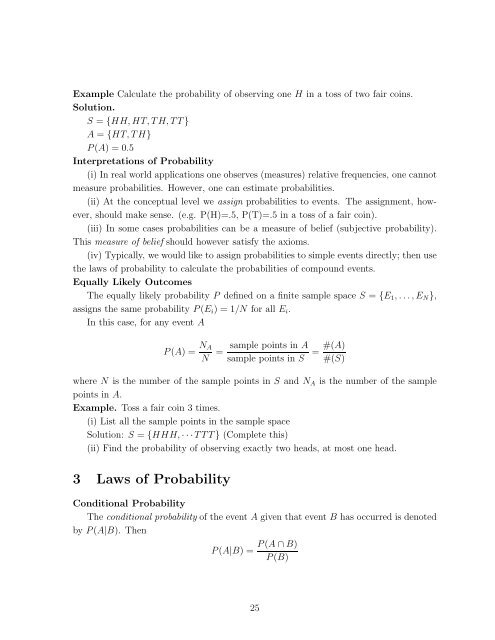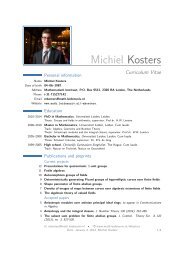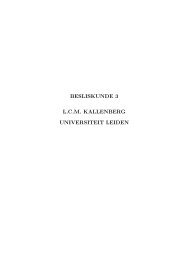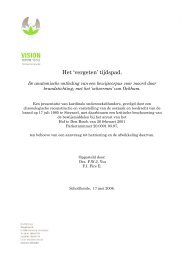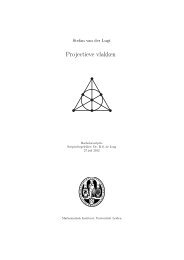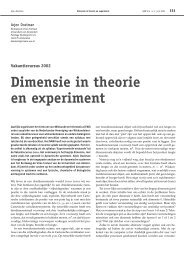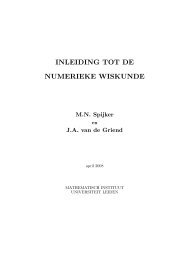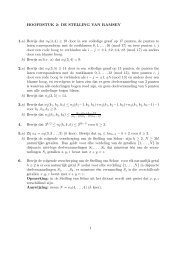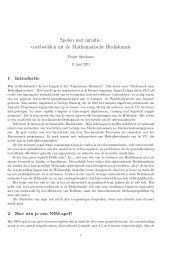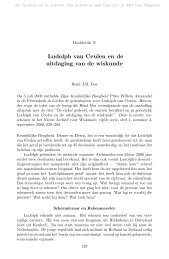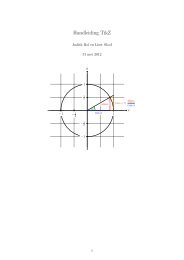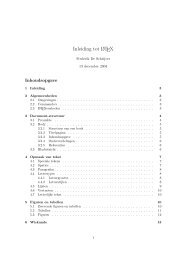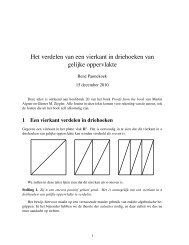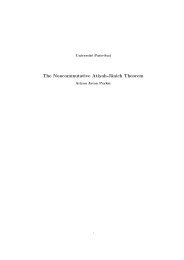MBA 604 Introduction Probaility and Statistics Lecture Notes
MBA 604 Introduction Probaility and Statistics Lecture Notes
MBA 604 Introduction Probaility and Statistics Lecture Notes
You also want an ePaper? Increase the reach of your titles
YUMPU automatically turns print PDFs into web optimized ePapers that Google loves.
Example Calculate the probability of observing one H in a toss of two fair coins.<br />
Solution.<br />
S = {HH,HT,TH,TT}<br />
A = {HT,TH}<br />
P (A) =0.5<br />
Interpretations of Probability<br />
(i) In real world applications one observes (measures) relative frequencies, one cannot<br />
measure probabilities. However, one can estimate probabilities.<br />
(ii) At the conceptual level we assign probabilities to events. The assignment, however,<br />
should make sense. (e.g. P(H)=.5, P(T)=.5 in a toss of a fair coin).<br />
(iii) In some cases probabilities can be a measure of belief (subjective probability).<br />
This measure of belief should however satisfy the axioms.<br />
(iv) Typically, we would like to assign probabilities to simple events directly; then use<br />
the laws of probability to calculate the probabilities of compound events.<br />
Equally Likely Outcomes<br />
The equally likely probability P defined on a finite sample space S = {E1,...,EN},<br />
assigns the same probability P (Ei) =1/N for all Ei.<br />
In this case, for any event A<br />
P (A) = NA<br />
N<br />
= sample points in A<br />
sample points in S<br />
= #(A)<br />
#(S)<br />
where N is the number of the sample points in S <strong>and</strong> NA is the number of the sample<br />
points in A.<br />
Example. Toss a fair coin 3 times.<br />
(i) List all the sample points in the sample space<br />
Solution: S = {HHH,···TTT} (Complete this)<br />
(ii) Find the probability of observing exactly two heads, at most one head.<br />
3 Laws of Probability<br />
Conditional Probability<br />
The conditional probability of the event A given that event B has occurred is denoted<br />
by P (A|B). Then<br />
P (A ∩ B)<br />
P (A|B) =<br />
P (B)<br />
25


